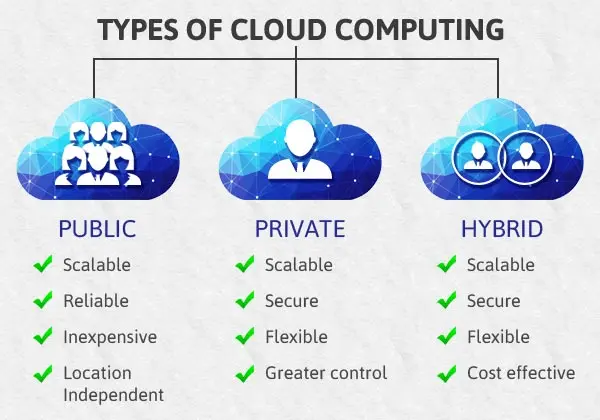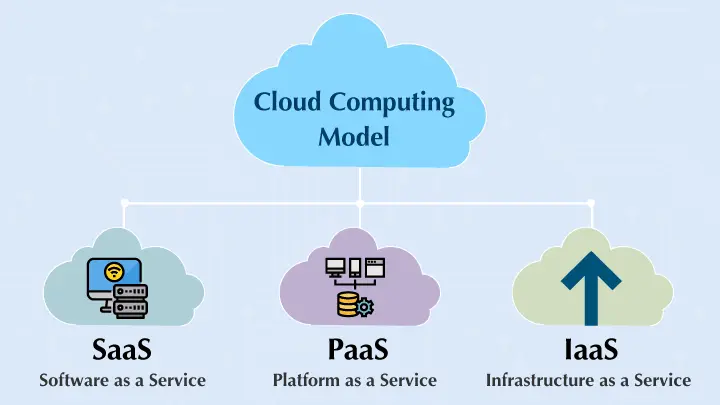As businesses and organizations continue to embrace digital transformation, the need for reliable, scalable, and cost-effective computing resources has become more critical than ever before. Cloud computing has emerged as a game-changer in this regard. However, there is a need for uninterrupted operation of cloud computing resources, including servers, storage and applications, which are largely provided by the underlying cloud infrastructure.
In this article, we will delve into all the nuances, including cloud infrastructure definition, types, components and benefits. Additionally, we will explore the Infrastructure as a Service (IaaS) model, which is a popular cloud computing model that provides users with virtualized computing resources. Lastly, we will cover how to build a cloud infrastructure, including the planning, provider selection, architecture design, implementation, testing, optimization, and maintenance aspects.
After reading this article, you will learn a lot about cloud infrastructure and how it makes cloud computing more efficient for storing and retrieving data. But if you need help implementing this technology, you should contact our cloud consulting firm.
– Starhouse Tech Team
What is Infrastructure in Cloud Computing?
At the core of any cloud computing environment lies the cloud infrastructure, which comprises a complex network of physical and virtual resources. The infrastructure in cloud computing encompasses various components, such as hardware, software, network, storage, and data centers, that work in tandem to facilitate the delivery of cloud computing services. Infrastructure in cloud computing allows users to access computing resources through the internet without having to own and manage the infrastructure themselves.
What Types of Cloud Infrastructure are There?
Let’s take a look at available cloud infrastructure types. There are three primary types that businesses and organizations can choose from, depending on their specific requirements and preferences.

Public Cloud
The Public Cloud Infrastructure is owned and managed by third-party providers, and it allows people to access computing resources through the internet. When businesses use this type of cloud infrastructure, they can save money by sharing resources with others. Also, it’s easy to adjust the amount of resources needed as per the requirement, making it very flexible.
Private Cloud
The Private Cloud Infrastructure is owned and run by one organization and isn’t shared with others. This type of cloud infrastructure gives companies more control and customization options, so they can create an infrastructure according to their requirements. Additionally, it’s considered more secure because it’s not exposed to the risks that come with the public cloud infrastructure.
Hybrid Cloud
The Hybrid Cloud Infrastructure is a combination of both public and private cloud infrastructure. It allows companies to use both types of resources based on their needs. For instance, companies can use public cloud infrastructure for non-sensitive data, whereas private cloud infrastructure can be used for sensitive data and critical applications that need more security and control.
Ultimately, the choice of cloud infrastructure depends on a variety of factors, such as the nature of the data and applications being used, the organization’s security and compliance requirements, and their budget. By understanding the different types of cloud infrastructure, businesses and organizations can make informed decisions and leverage the full potential of cloud computing.
What are the Components of Cloud Computing Infrastructure?
In a cloud computing infrastructure, there are several key components that work together to provide cloud computing services.
Hardware
Hardware is one of the components of cloud computing, which consists of servers, storage devices, and networking equipment. It’s necessary for cloud computing because it provides the physical resources needed to offer computing services to users. The virtualization software allows multiple users to share the same physical hardware.
Software
Software is another component of cloud computing infrastructure, which involves operating systems, virtualization software, and application software. Operating systems manage hardware resources and offer necessary services for running applications. Virtualization software creates virtual machines to enable multiple users to use the same hardware resources. Lastly, application software includes the software applications that users can access through the cloud.
Network
The network is also a crucial part of cloud computing infrastructure, which consists of routers, switches, and firewalls used to connect various components of the infrastructure. It’s vital because it allows users to access computing resources over the internet, allowing them to work from any device and location.
Data Centers
Data centers are physical facilities where cloud computing infrastructure is stored. They provide power, cooling, and security to the hardware, ensuring that cloud services are always available to users. Data centers are designed to be highly reliable and fault-tolerant.
Cloud infrastructure components work together to provide users with computing resources on demand. By understanding these components, businesses and organizations can make informed decisions about their cloud computing needs and choose the right infrastructure to meet their requirements.
Benefits of Cloud Infrastructure
There are many benefits of cloud infrastructure, including:
- Scalability: Cloud infrastructure allows organizations to scale their computing resources up or down depending on their needs, without having to invest in additional hardware.
- Cost Savings: Organizations can save money by using cloud infrastructure, as they only pay for what they use, and do not have to invest in expensive hardware.
- Reliability: Cloud infrastructure providers offer high availability and uptime guarantees, which ensure that services are always accessible.
- Flexibility: Cloud infrastructure allows users to access resources from anywhere in the world, using any device with an internet connection.
What is Infrastructure as a Service in Cloud Computing?
IaaS (Infrastructure as a Service) is a type of cloud computing where people can use virtual resources like servers, storage, and networking over the internet. With IaaS, users can quickly provision and de-provision resources as needed, without having to invest in physical infrastructure.

How to Build Cloud Infrastructure?
To build a cloud infrastructure, several factors should be considered, including business needs, provider selection, architecture design, implementation, testing and optimization, maintenance, and management.
Firstly, it’s crucial to determine the computing resources required to support business needs, such as storage, processing power, and network bandwidth. Secondly, selecting a cloud infrastructure provider that best suits your needs, based on factors like cost, reliability, and scalability.
Next, it’s essential to develop an architecture design that outlines the components required for the infrastructure, including hardware, software, and network. After that, implement the architecture design and set up the infrastructure according to the plan, which involves configuring hardware, software, and network components.
Furthermore, it’s essential to test the infrastructure and optimize it for performance, security, and cost-effectiveness. Regularly monitor the infrastructure, apply patches and updates, and manage user access to the resources for maintenance and management.
Conclusion
Infrastructure of cloud computing is a critical component that enables users to access computing resources over the internet without having to own and manage the infrastructure themselves. There are various types of cloud infrastructure, like public, private, and hybrid clouds. The components of cloud computing infrastructure include hardware, software, network, and data centers. Cloud infrastructure offers many benefits, such as scalability, cost savings, reliability, and flexibility. Infrastructure as a Service (IaaS) is a popular cloud computing model that provides users with virtualized computing resources. Building a cloud infrastructure requires careful planning, provider selection, architecture design, implementation, testing, and optimization, as well as regular maintenance and management.





